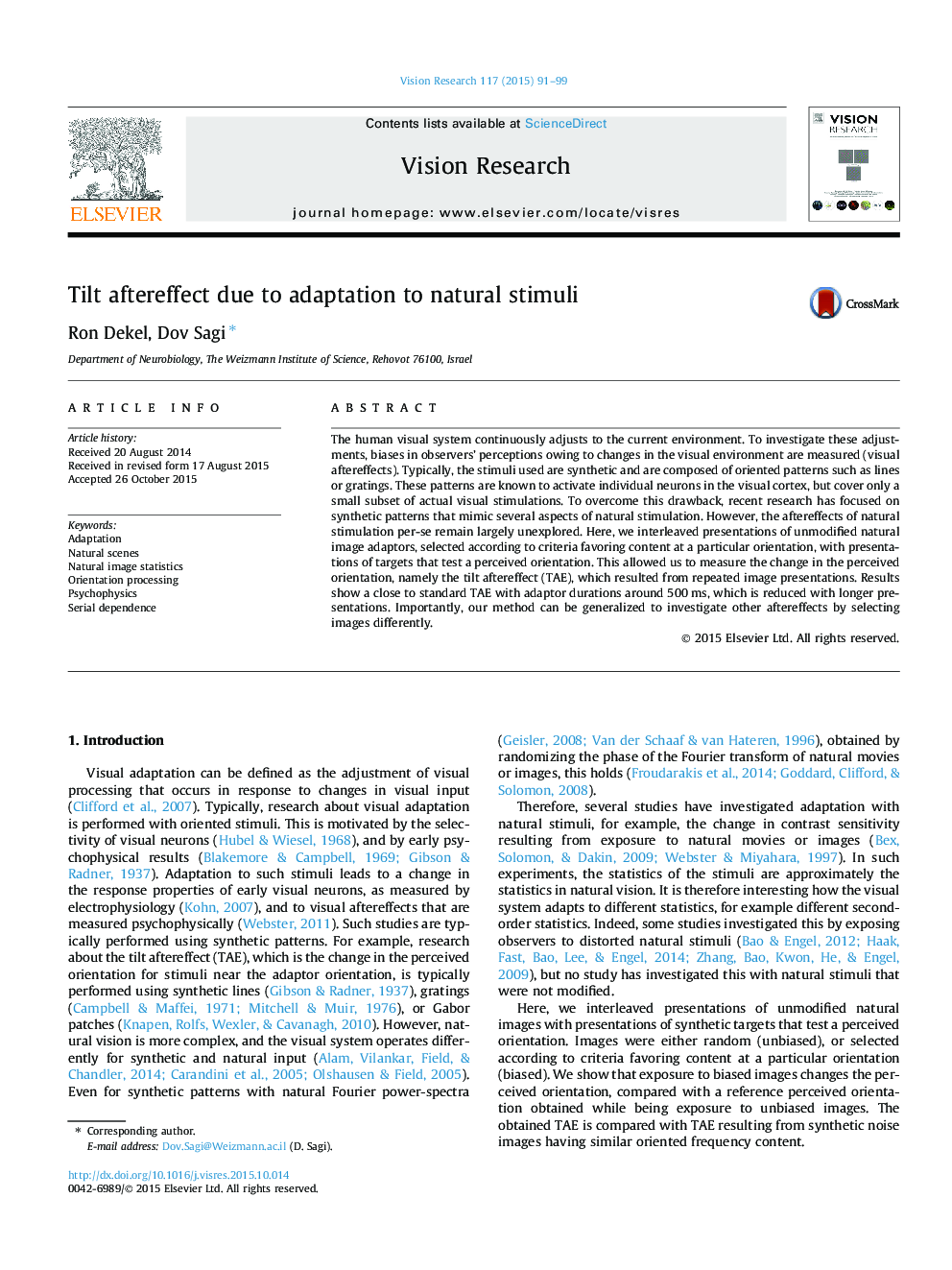| Article ID | Journal | Published Year | Pages | File Type |
|---|---|---|---|---|
| 6203080 | Vision Research | 2015 | 9 Pages |
â¢The visual system adapts to the oriented content in unmodified natural images.â¢Adapting to specific natural images can generate specific types of aftereffects.â¢Tilt aftereffect is reduced with increased duration of adaptation to natural objects.
The human visual system continuously adjusts to the current environment. To investigate these adjustments, biases in observers' perceptions owing to changes in the visual environment are measured (visual aftereffects). Typically, the stimuli used are synthetic and are composed of oriented patterns such as lines or gratings. These patterns are known to activate individual neurons in the visual cortex, but cover only a small subset of actual visual stimulations. To overcome this drawback, recent research has focused on synthetic patterns that mimic several aspects of natural stimulation. However, the aftereffects of natural stimulation per-se remain largely unexplored. Here, we interleaved presentations of unmodified natural image adaptors, selected according to criteria favoring content at a particular orientation, with presentations of targets that test a perceived orientation. This allowed us to measure the change in the perceived orientation, namely the tilt aftereffect (TAE), which resulted from repeated image presentations. Results show a close to standard TAE with adaptor durations around 500Â ms, which is reduced with longer presentations. Importantly, our method can be generalized to investigate other aftereffects by selecting images differently.
